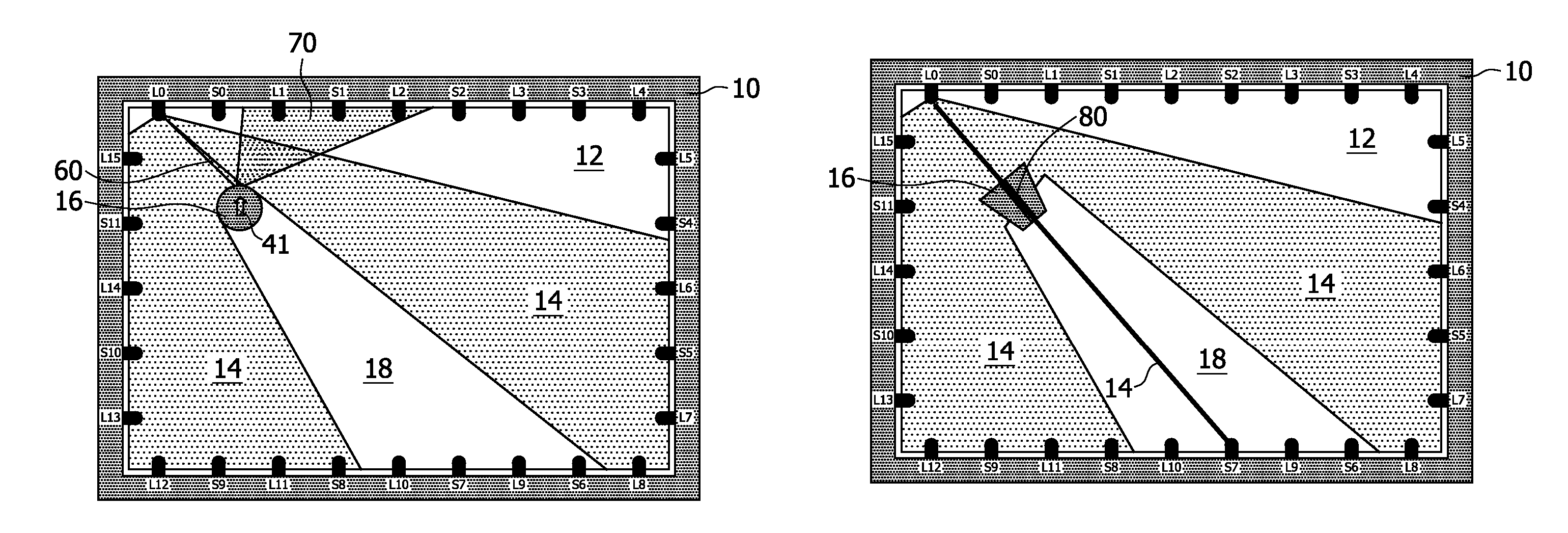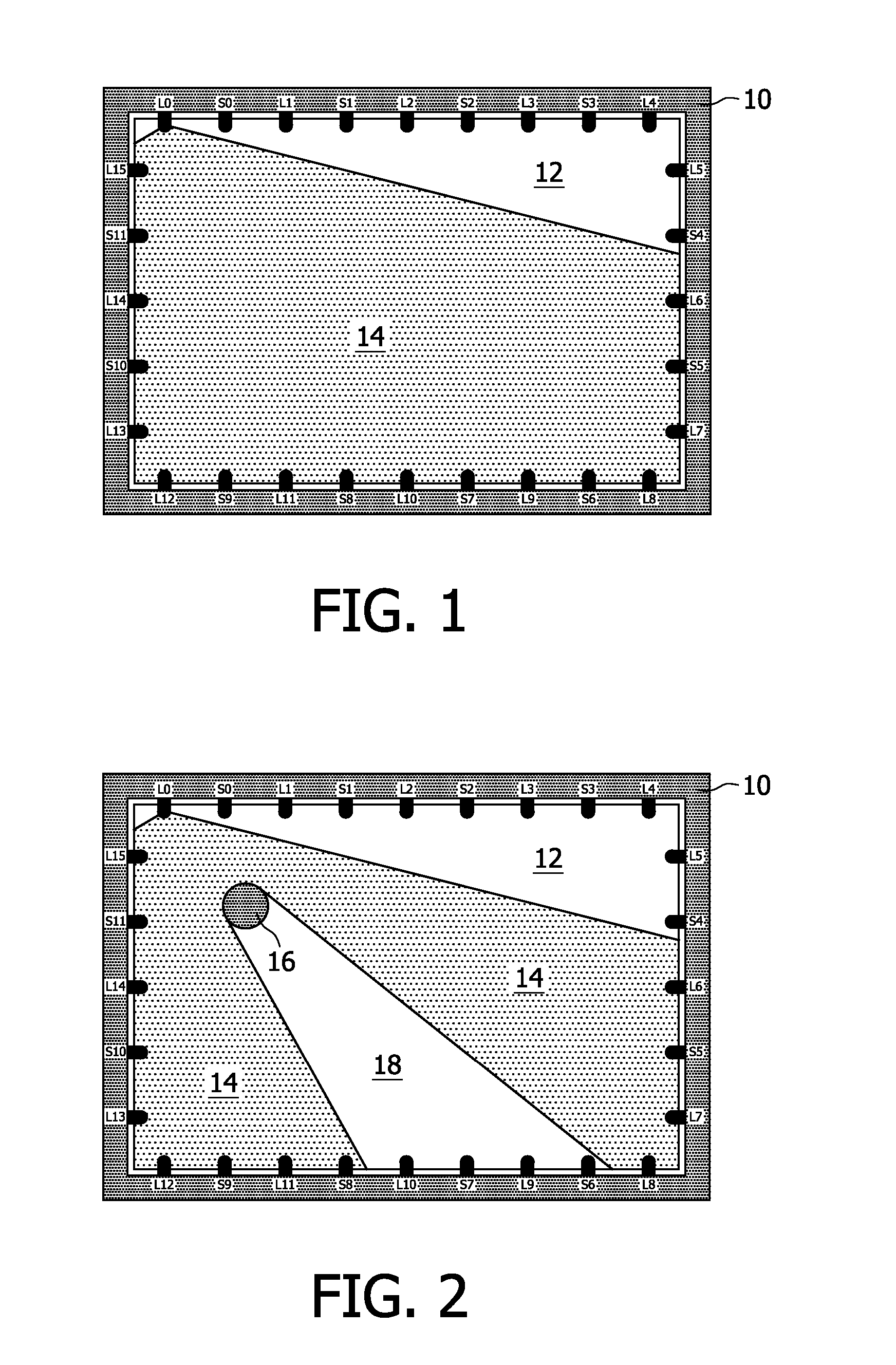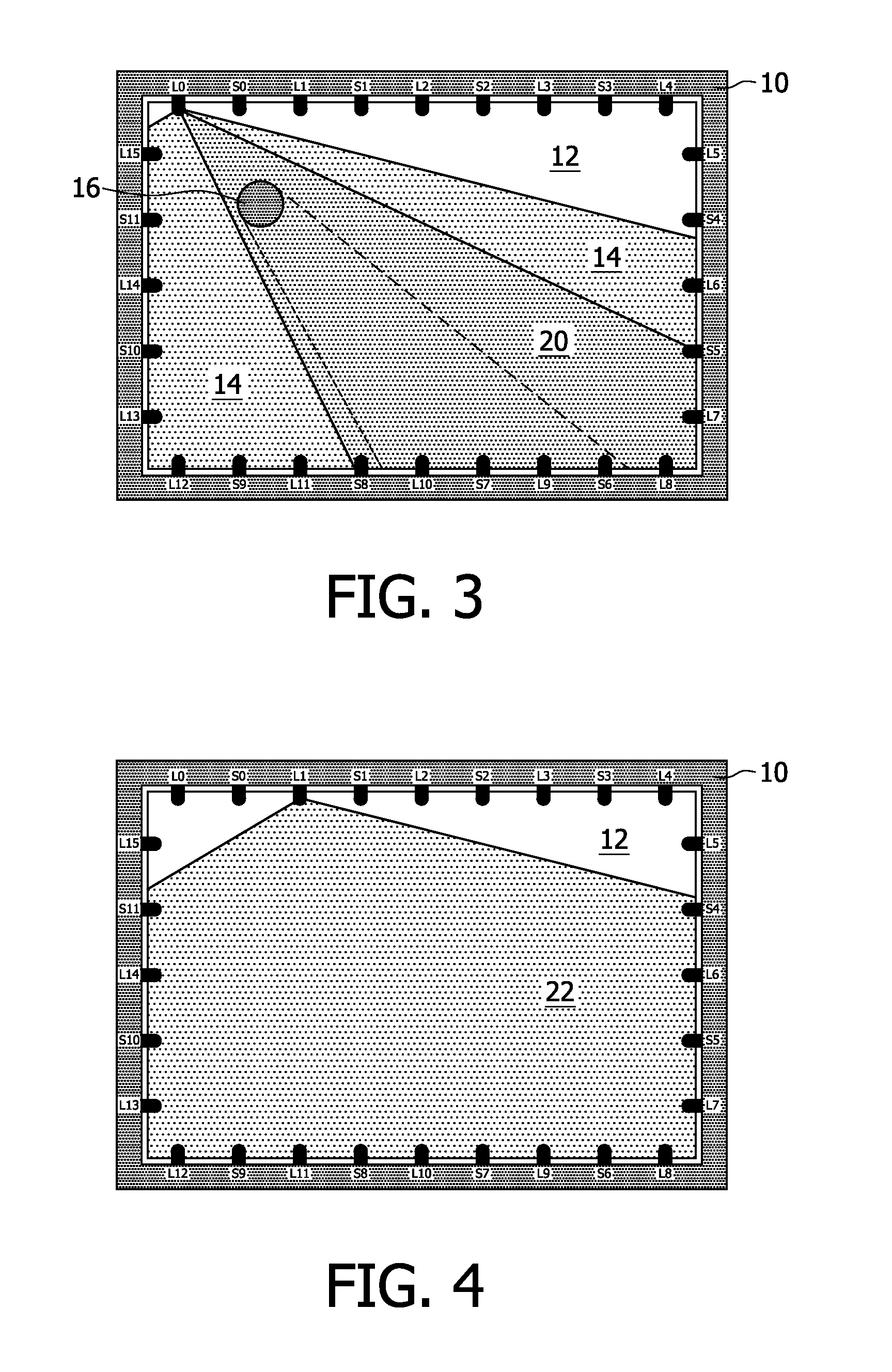Determining the orientation of an object placed on a surface
a technology for determining the orientation of objects and surfaces, applied in indoor games, instruments, sport apparatus, etc., can solve the problems of inability to detect multiple points at the same time, and inability to use multi-point detection techniques. to achieve accurate orientation detection
- Summary
- Abstract
- Description
- Claims
- Application Information
AI Technical Summary
Benefits of technology
Problems solved by technology
Method used
Image
Examples
first embodiment
[0078]According to the invention, which is illustrated in FIG. 10, the object comprises a first opaque part and a second reflective part 42, which is added on the side of the object 16. Arrow 41 points in the direction of the reflective part 42. FIG. 10 shows the object 16 in two opposite positions as illustrated by the arrow 41 pointing in opposite directions.
[0079]As a result of the reflective part 42, which functions as an orientation mark of the symmetrical object, the orientation thereof can be detected as illustrated in FIG. 11. As shown in FIG. 11 when the first light source L0 is switched on, object 16 causes a shadow 18 in the same way as illustrated in FIG. 2. However, it will also cause a reflection 70 of a part 60 of the light beam 40. This way the detected result will contain an indication of the orientation of the object. Here the rotation of the object will determine the angle of the reflected light. The sensor in this direction can detect an increase of light intensi...
second embodiment
[0083]Of course non-symmetrical objects are detected including their orientation, but this orientation is rather coarse. According to the invention, an object 16 is provided with a first opaque part and a second transparent part such as a hole or passage 80 that will pass light only in a certain direction, as shown in FIGS. 13 and 14. Accurate detection of the orientation of this passage is possible.
[0084]FIG. 13 illustrates a snapshot of the touch screen display during a point in time at which the first light source L0 is switched on during an operational mode, wherein the object according to a second embodiment of the invention is oriented in a first way. In this orientation, no light of the light beam 14 passes through the passage 80 and a shadow 18 is detected, in the same way as illustrated in FIG. 2. In FIG. 14 the object 16 is oriented in a second way. This orientation gives rise to a detector signal in the middle of the shadow 18, which is detected by sensor S7. It will be a...
third embodiment
[0085]FIG. 15 illustrates a snapshot of the touch screen display during a point in time at which the first light source L0 is switched on during an operational mode, showing the object 16 according to the invention. Besides the passage 80, the object 16 comprises a mirror 90. This mirror 90 causes a reflection 96 of a first narrow part 92 of the light beam 14 in a first direction, as detected by sensor S1. It causes a reflection 98 of a second narrow part 94 of the light beam 14 in a second direction, as detected by sensor S11.
[0086]By adding multiple options for orientation detection, more orientation information can be gathered by the system and therefore increase the accuracy of the detection or detect orientation of the object in more occasions, e.g. when other objects on the screen block one of the orientation detection options, e.g. the hole in the object.
[0087]According to a fourth and a fifth embodiment of the invention as shown in FIGS. 16 and 17 objects are provided that a...
PUM
 Login to View More
Login to View More Abstract
Description
Claims
Application Information
 Login to View More
Login to View More - R&D
- Intellectual Property
- Life Sciences
- Materials
- Tech Scout
- Unparalleled Data Quality
- Higher Quality Content
- 60% Fewer Hallucinations
Browse by: Latest US Patents, China's latest patents, Technical Efficacy Thesaurus, Application Domain, Technology Topic, Popular Technical Reports.
© 2025 PatSnap. All rights reserved.Legal|Privacy policy|Modern Slavery Act Transparency Statement|Sitemap|About US| Contact US: help@patsnap.com



